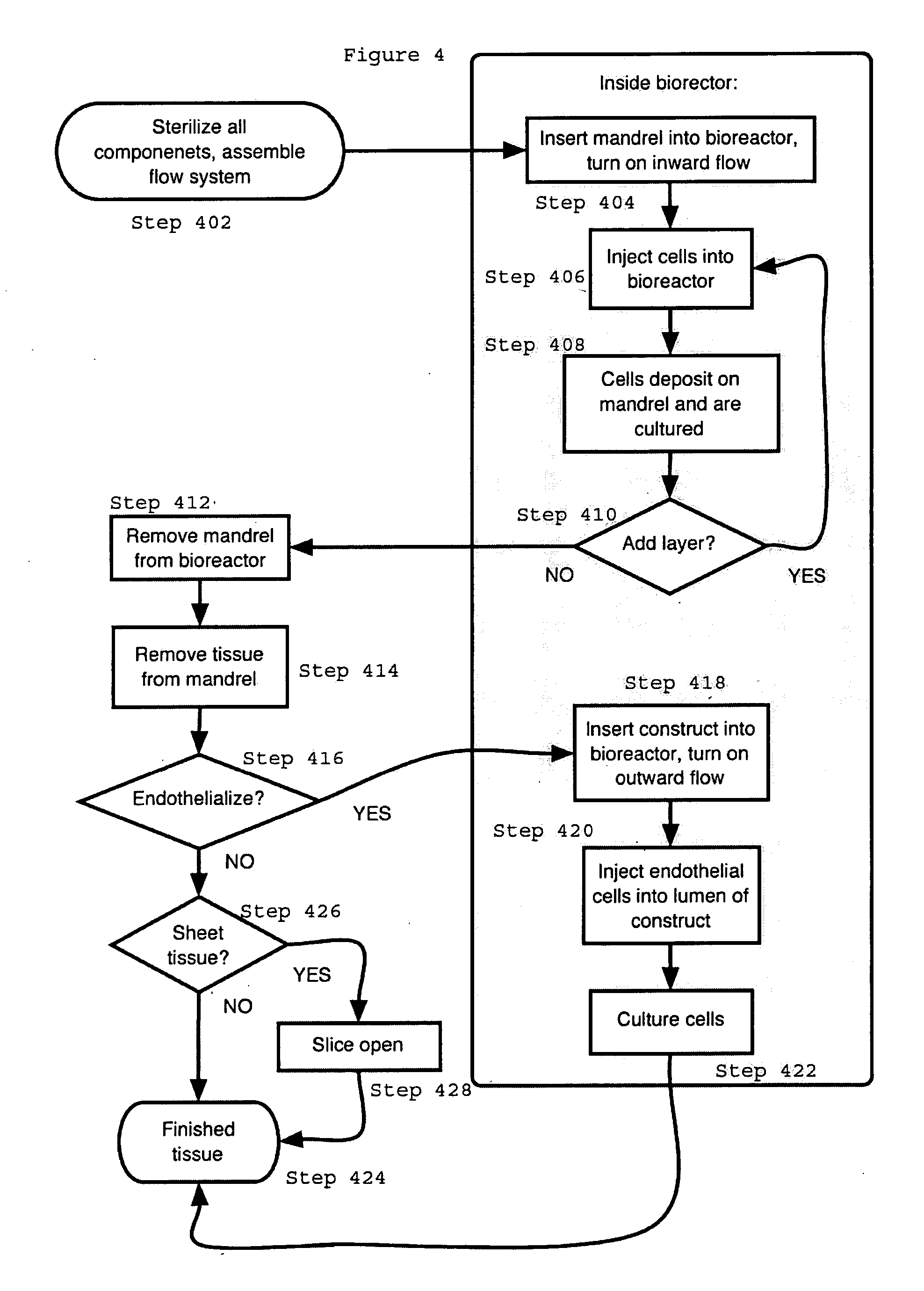Convective flow tissue assembly
a tissue and convective flow technology, applied in the field of systems and methods for producing tissue constructs in vitro, can solve the problems of increasing the burst strength of grafts, invasive graft harvesting, and patients often lack adequate autogenous vessels to serve as bypass conduits, etc., to achieve accurate tissue morphology, avoid delamination and uniformity issues, and maintain differentiation phenotyp
- Summary
- Abstract
- Description
- Claims
- Application Information
AI Technical Summary
Benefits of technology
Problems solved by technology
Method used
Image
Examples
Embodiment Construction
[0018] The present invention provides for novel systems and methods for performing convective flow tissue assembly and producing tissue constructs in vitro. The processes of the present invention generally involve the assembling of cells on an inert, porous mandrel, which only serves as a template and will ultimately be removed, via drag forces produced by a radial, convective flow of culture medium. The convective flow may be maintained by holding the luminal side of the mandrel at a lower pressure than that of the main bioreactor chamber, resulting in a transmural pressure gradient and radial flow within the bioreactor. As a result, cells may be actively deposited on the mandrel by fluid drag forces, thereby maximizing efficiency and ensuring a uniform distribution of cells on the mandrel. The pressure gradient will be radially symmetric and will result in fluid flow, which will also be symmetric in the radial direction.
[0019] The CFTA cell deposition system of the present invent...
PUM
| Property | Measurement | Unit |
|---|---|---|
| wall shear stress | aaaaa | aaaaa |
| wall shear stress | aaaaa | aaaaa |
| pressure | aaaaa | aaaaa |
Abstract
Description
Claims
Application Information
 Login to View More
Login to View More - R&D
- Intellectual Property
- Life Sciences
- Materials
- Tech Scout
- Unparalleled Data Quality
- Higher Quality Content
- 60% Fewer Hallucinations
Browse by: Latest US Patents, China's latest patents, Technical Efficacy Thesaurus, Application Domain, Technology Topic, Popular Technical Reports.
© 2025 PatSnap. All rights reserved.Legal|Privacy policy|Modern Slavery Act Transparency Statement|Sitemap|About US| Contact US: help@patsnap.com



